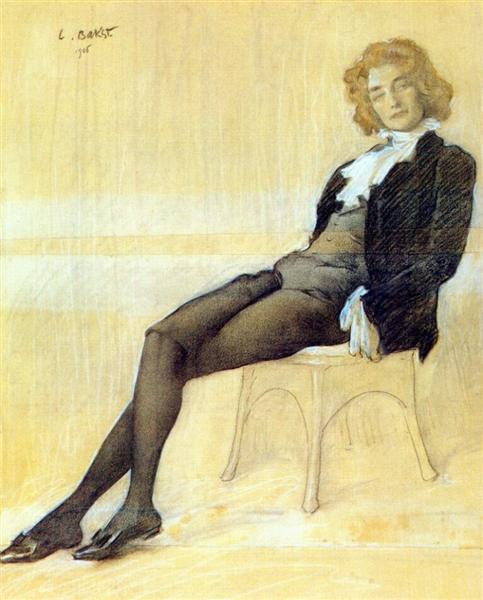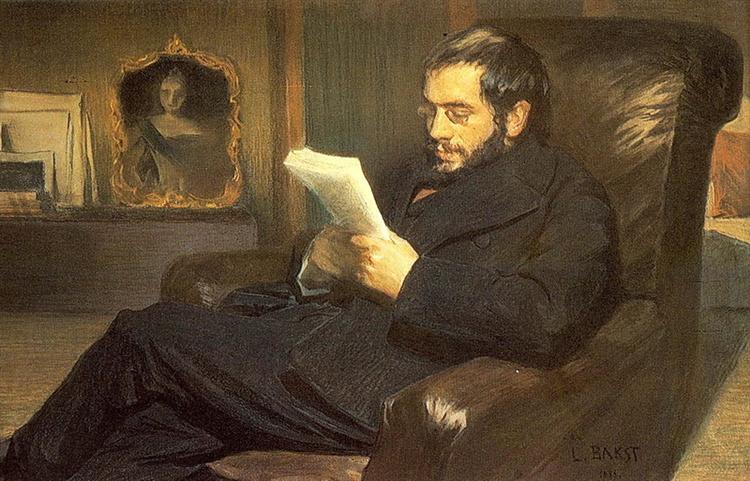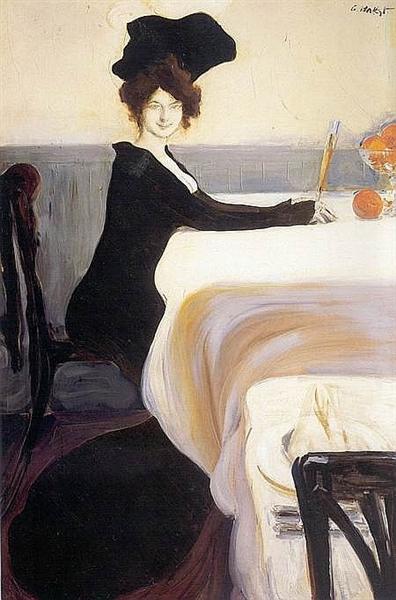
The portrait of Zinaida Gippius is made on a glued sheet of paper. The artist made a sketch, it was surprisingly successful, Bakst wished to turn it into the final version, and he had to glue the sheet, because (here the girls can experience a sharp attack of envy) otherwise it would not be possible to plausibly depict Zinaida Gippius’ infinitely long and infinitely beautiful legs.
And what a costume! Today it is difficult to understand how scandalous and indecent her openly masculine tight-fitting suit was. And also a defiant pose, and those endless legs … By the way, the famous decadent of the Silver Age was a very beautiful woman. Green eyes, a shock of light red hair, a graceful lithe figure. Alexander Benois called her the Princess of Dreams with the smile of Mona Lisa, the Green-eyed Naiad – Blok, the White Devil – Merezhkovsky, and Igor Severyanin – Golden Face. At the same time, Gippius herself loved to sign her articles and poems with male names.
As a rule, Bakst quickly completed portraits (the exception is the portrait of Diaghilev, on which the artist worked for two years). He seemed to instantly grasp the very essence of the model. In this portrait, his psychologism and skill of a physiognomist are fully manifested. Zinaida Gippius, aesthetics, a “crazy proud woman,” a child of her era, appears in this picture as sharp, caustic, self-confident, alarming. Pavel Florensky said about Gippius that she was “immeasurably better than she seems,” and considered her key quality to be sincerity and the fear of being false. This internal tension can be read from Bakst’s portrait no less clearly than external self-confidence. The poet is shown not in motion, but it seems very impetuous – like Bakst’s line itself. In general, the line can be called the basis of many of his portraits.
Bakst allowed himself to sign an autograph anywhere on the painting, without following the generally accepted requirement to sign the work in the lower right corner. In this case, we see his signature in the upper left corner.
The Portrait of Zinaida Gippius entered the Tretyakov Gallery in 1920 – as part of the transformation of everything private into folk. Previously, it belonged to the famous Moscow collector Sergei Koussevitsky, who emigrated shortly after the revolution.
Year of painting: 1906. Dimensions of the painting: 54 x 44 cm. Material: paper on cardboard. Writing technique: pencil, chalk. Genre: portrait. Style: modern. Gallery: State Tretyakov Gallery, Moscow, Russia.


